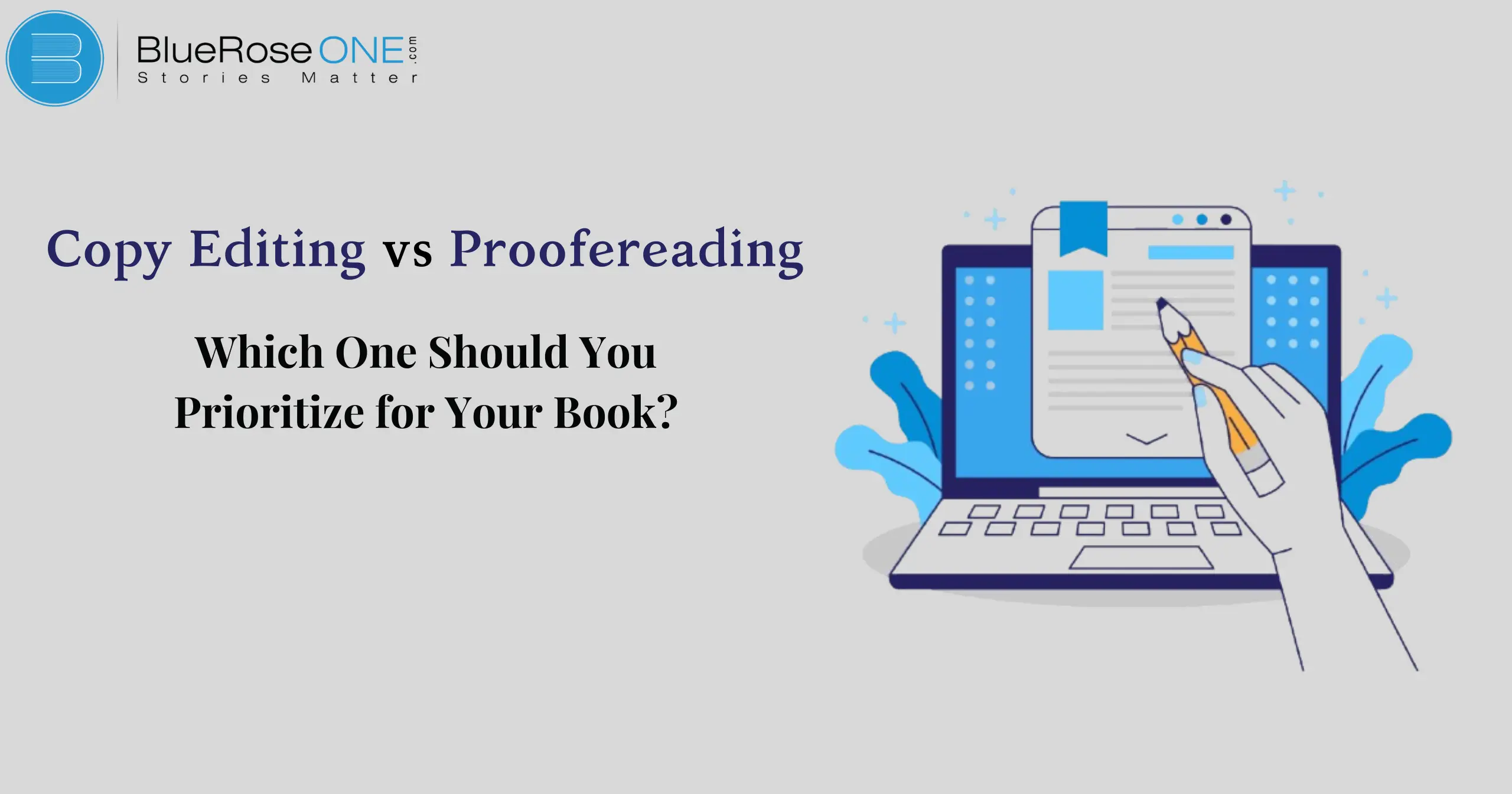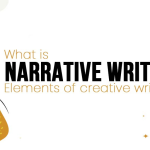In the realm of book publishing, making sure your work shines requires refining your manuscript. Copy editing and proofreading are two crucial elements in this process, but which one should you focus on first? Let’s examine the distinctions and determine which matters more at different points in the life of your book.
What is Copy Editing?
Copy editing is the stage where a professional editor focuses on improving the grammar, syntax, and style of your manuscript. The copy editor will scrutinize your writing for any issues that affect clarity, consistency, and readability. They aren’t just checking for surface-level mistakes but are enhancing the flow and quality of your entire book.
Key Elements of Copy Editing
Correcting Grammatical Errors
One of the most important aspects of copy editing is fixing grammar mistakes to make the text readable and flow naturally. Sentence fragments, improper verb tenses, and subject-verb agreement correction are all part of this step.
Copy editors correct these errors to improve readability and preserve the author’s original intent. Proper grammar is an essential part of copy editing any book since it makes the reader interact with the text more successfully.
Ensuring Consistent Tone and Style
A crucial aspect of copy editing is making sure that tone and style are consistent. During this step, the material is examined to ensure that the writing style, voice, and tone are consistent throughout the book. Uniform style improves reading, while consistent tone keeps readers interested.
Copy editors guarantee that the book’s content is coherent and clear by paying close attention to details like word choice, sentence structure, and overall flow. This results in a polished final product that readers will like.
Fact-Checking and Accuracy
Ensuring the accuracy of all facts and details in the text is a crucial aspect of copy editing. Verifying names, dates, locations, and any other particular facts mentioned in the book are all part of this process.
By ensuring that everything is accurate and consistent, a copy editor lowers the possibility of mistakes that can mislead readers. Fact-checking is an essential step in the copy editing process because it not only keeps the work professional but also increases its credibility.
The Purpose of Copy Editing in Book Writing
Rewriting your text is the primary objective of copy editing. Your rough draft is polished by a copy editor to make it readable, clear, and interesting to readers. Before beginning any kind of final review or publication, this phase is crucial.
What is Proofreading?
On the other hand, proofreading comes last before your book is released. It focuses on locating and correcting little, superficial flaws like formatting problems, typos, and punctuation faults. Proofreaders search for details that might have been overlooked during several editing iterations.
You may also read: 7 Types of Conflict in Literature
Key Elements of Proofreading
Spelling and Punctuation
The use of proper spelling and punctuation is essential during proofreading. Every word and sentence is meticulously examined during this procedure to make sure there are no typos or improper punctuation.
These minor mistakes might divert readers’ attention and compromise the readability of your work. Spelling and punctuation are also addressed during copy editing, but proofreading is the last step before publication.
Making proper spelling and punctuation a priority will guarantee that your work appears polished and professional, improving the reading experience in general.
Correcting Typos and Formatting Issues
Error correction and formatting correction are important aspects of proofreading. While proofreading ensures your work is error-free in its final form, copy editing concentrates on enhancing sentence structure and style.
Correcting typos, misplaced punctuation, and inconsistent text formatting are all part of this process. Proofreading ensures that your book looks polished and professional before it gets to print by carefully checking it for mistakes and making sure the typeface, margins, and headings are all the same.
Ensuring a Professional Presentation
Making sure the final content looks professional by looking for minor typos is a crucial part of proofreading. Proofreading finds errors in grammar, formatting, and style that are missed in copy editing, which concentrates on enhancing style, clarity, and structure.
It ensures your book is polished and prepared for release. Proofreading gives a neat, polished finish that raises your author reputation by meticulously going over every detail.
Major Differences Between Copy Editing and Proofreading
While both are essential, they focus on different aspects of the editing process:
Depth of Review: Copy editing is more thorough and deals with structure, tone, and grammar, whereas proofreading focuses on minor, final touches.
Type of Errors Addressed: Copy editors address big-picture issues like readability and clarity, while proofreaders deal with spelling, punctuation, and formatting errors.
Timing: Copy editing happens early, often after the first or second draft, while proofreading is the last step before publication.
When Should You Prioritize Copy Editing?
Give copy editing first priority if your book still requires a lot of structural, stylistic, or grammatical changes. In the early phases of book development, this step is essential since it establishes the foundation for a compelling story.
When Should You Prioritize Proofreading?
After your book has been thoroughly revised and is almost ready for publishing, proofreading should be done. By taking this step, you can make sure that there are no last-minute mistakes or typos. It’s the last coat of polish before your book is published.
Can You Skip One of These Steps?
Skipping either copy editing or proofreading can lead to a less polished, professional book. Here’s why you shouldn’t skip either step:
Skipping Copy Editing: It may be tempting to forgo copy editing, particularly if you’re pressed for time or money. But doing so may reveal problems that are missed, such as tone, clarity, or structure irregularities.
Polishing the language, enhancing sentence structure, and guaranteeing grammatical and stylistic accuracy are the main goals of copy editing.
Without it, readers may find your book to be unpolished and less engaging. Although you can omit some procedures, omitting copy editing could lower the caliber of your work as a whole.
Skipping Proofreading: It’s dangerous to omit proofreading, as it might negatively impact the quality of your book. Grammar mistakes, typos, and inconsistencies are best detected by proofreading, as opposed to copy editing, which concentrates on enhancing clarity, structure, and flow.
If proofreading is neglected, these finishing touches are missed and your book may come across as amateurish. A fresh pair of eyes during proofreading guarantees your work is flawless and error-free even after extensive copy editing, which is why it’s crucial for a successful final draft.
You may also read: Book Review: Clinical Pathology and toxicology by Dr. Pradeep Kumar Yadav
Why You Need Both Copy Editing and Proofreading
The completion of both phases is essential to writing a book of expert caliber. Proofreading removes the tiny mistakes that could lower the caliber of your work, while copy editing guarantees that your writing is cohesive and interesting. When combined, they guarantee that your book will be at its finest.
How to Choose Between Copy Editing and Proofreading
Determine which are most important based on your manuscript’s requirements. If you need to make significant changes to your story, start with copy editing. Proofreading should be your first priority if you’re nearing the end and merely need one last look over your work for faults. Aside from that, think about your timeframe and budget as well both are investments in the success of your book.
Conclusion
It’s true that you need both copy editing and proofreading in the conflict. Every one of them is unique and essential to getting your book ready for print. When you give them the attention they need at the appropriate points in the writing process, your work will come out polished, polished, and ready to hook readers.
















